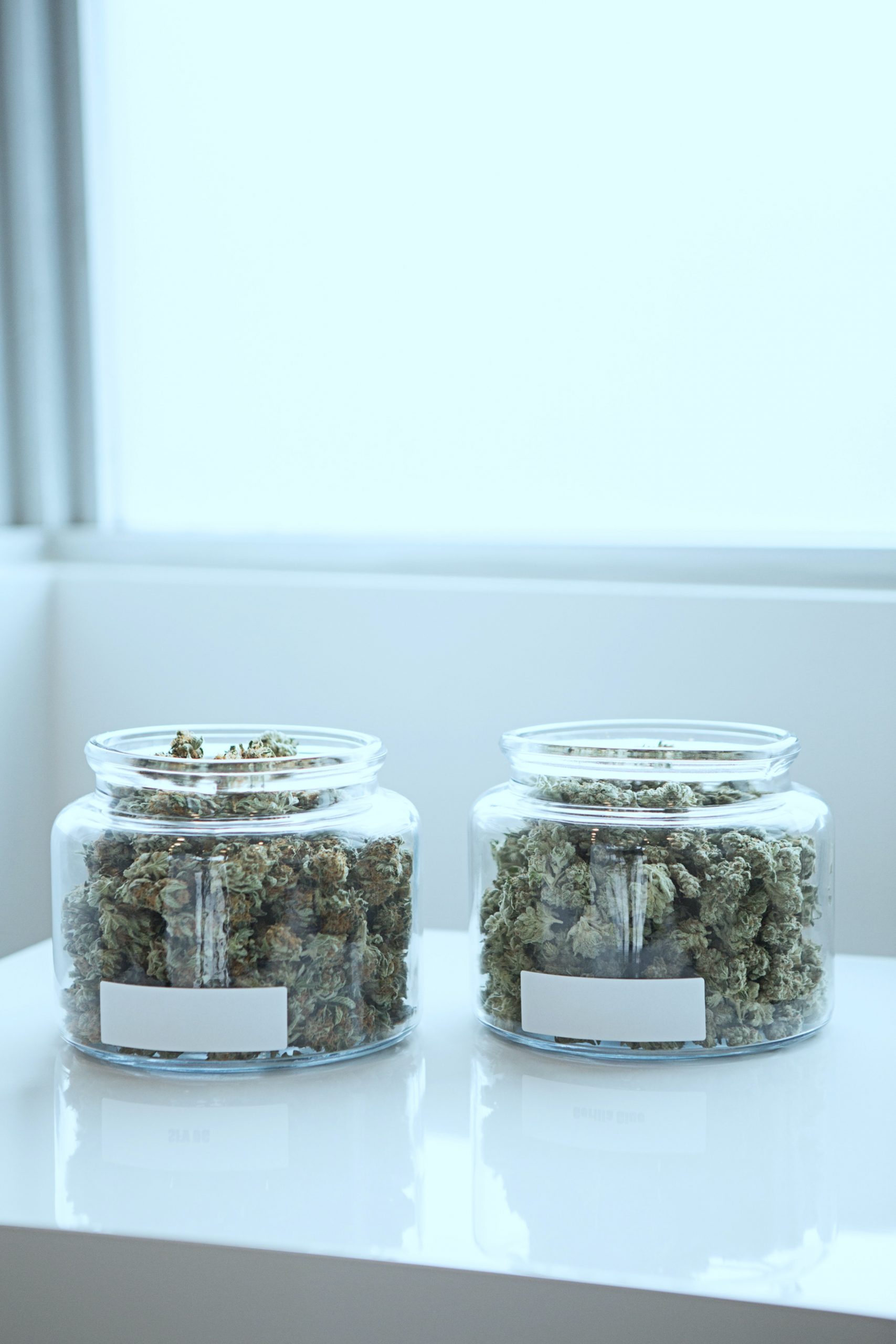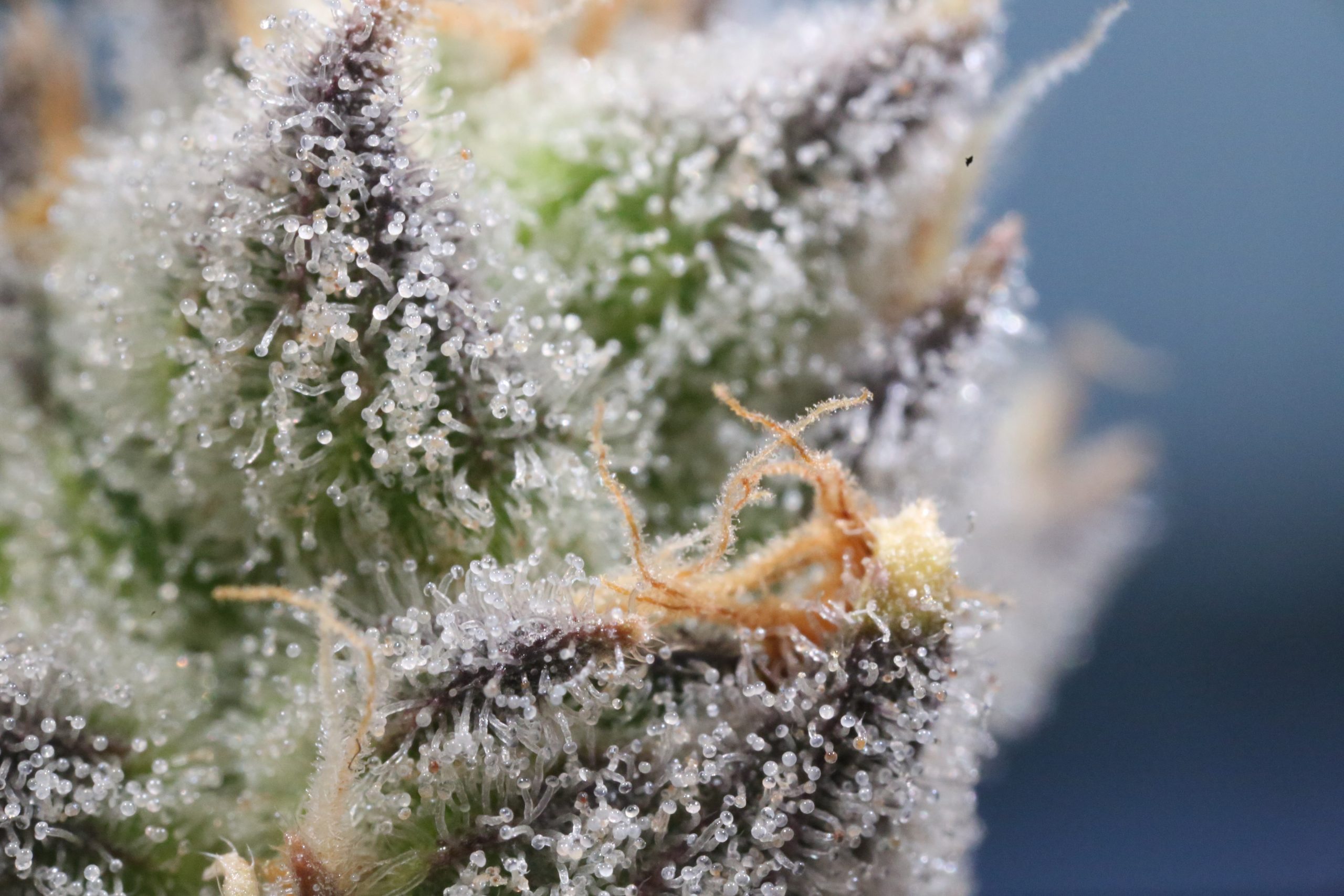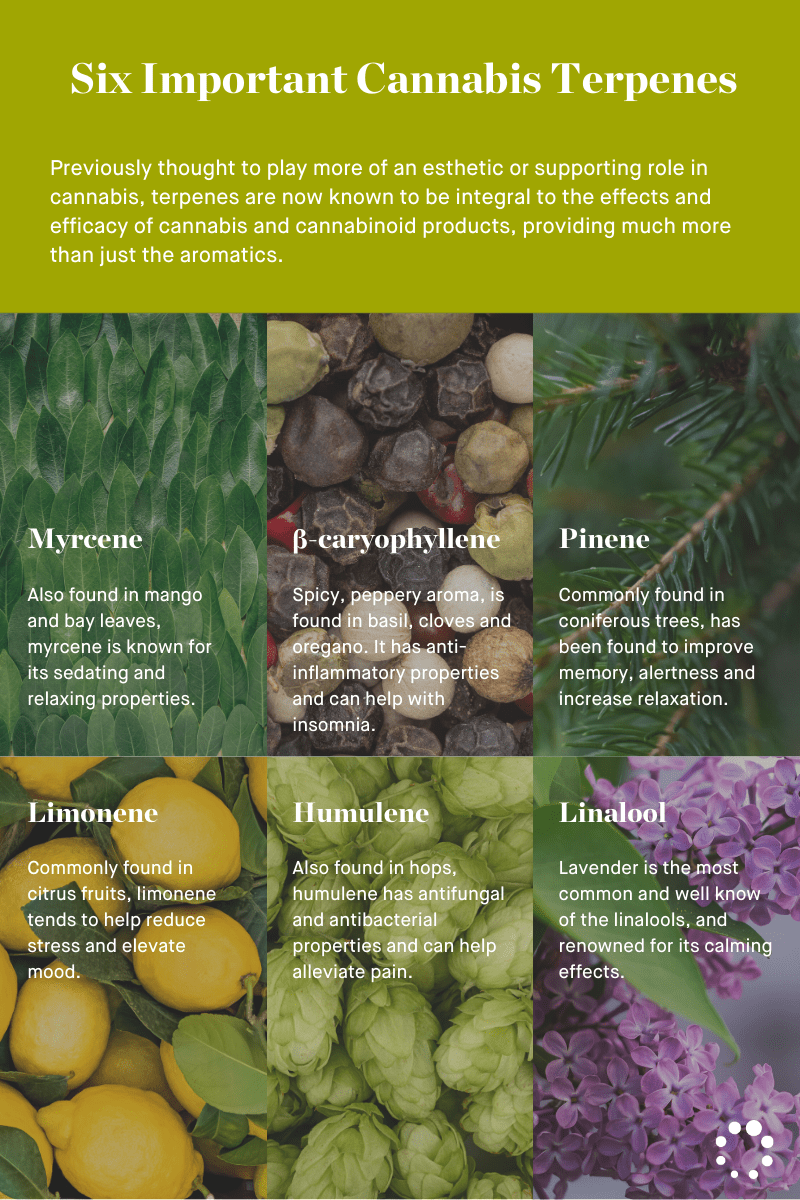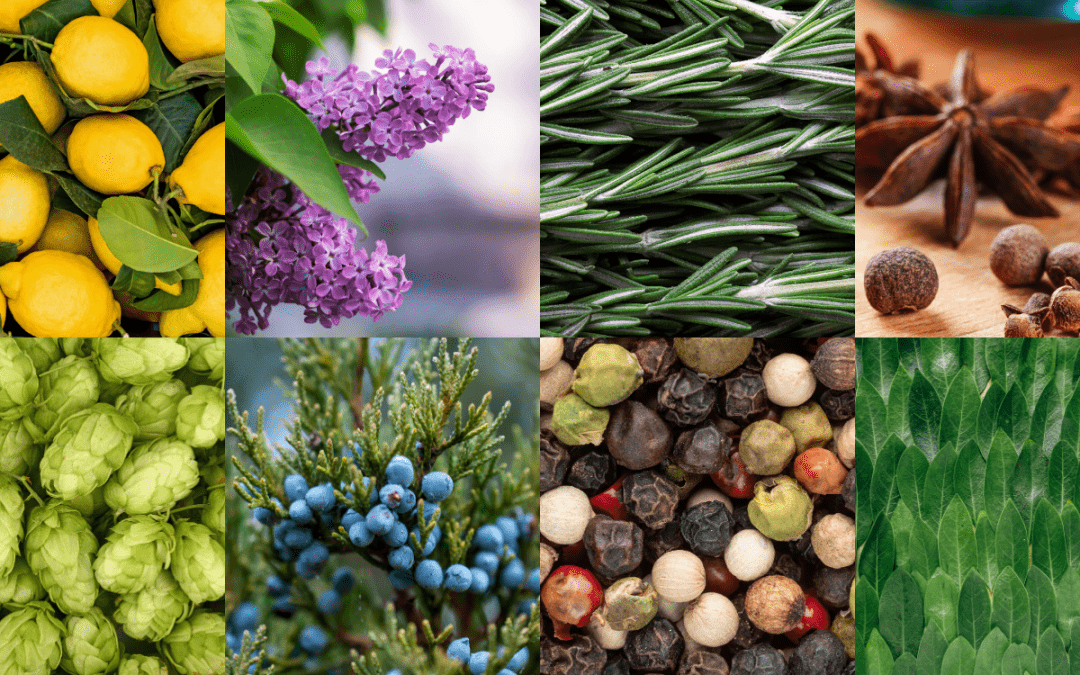Finding the right ratio of cannabinoids and terpenes can make all the difference for conditions like pain, chronic inflammation, or anxiety.
Your own experiences with cannabis and cannabinoids will be relative, and personal. One person may find that a certain combination helps them focus, while their friend finds that same combination induces anxiety.
Why is it that the Granddaddy Purple strain of cannabis that your uncle swears by to help him relax and sleep causes you insomnia? And why does the same combination of cannabinoids and terpenes that lifts your mood make your best friend feel paranoid? Because your genes say so. Your genetics can predict which combination of cannabinoids and terpenes you should be taking to support your health and wellness goals. people.
If you’re not convinced, keep reading for the scientific explanation and a link to the quiz that can tell you if taking a DNA test can help you optimize your cannabis experience.
Why do terpenes matter for your health outcomes?
Terpenes, the aromatic compounds found in cannabis, have a particularly interesting relationship with cannabinoids. In fact, different terpenes can either amplify or tone down the effects of certain cannabinoids, including THC. The cannabinoids CBD and THC also have an interdependent relationship, making their ratio to each other especially important.
Varieties of cannabis, called strains, are propagated and cloned for specific cannabinoid concentrations and terpene profiles. Despite this, these characteristics can still vary from year to year, grower to grower, and plant to plant. Even small differences in compound ratios can make a significant difference in therapeutic applications.
Cannabinoid formulations use exact combinations of compounds in specific proportions for a predictable, consistent therapeutic effect. The ratio of cannabinoids and terpenes in a formulation is constant, so particularly for medicinal or therapeutic uses, formulations are a more reliable option.
Your individual cannabis experience will be driven by how the cannabinoids interact with each other, with the dominant terpenes, and with your personal genetic and physiological characteristics.
Could knowing your genetic predisposition improve your cannabis experience? Try this quiz to find out.

Finding the right cannabis or cannabinoid product.
The cannabinoid content of any given cannabis-based product will come from one of two sources: a strain or a formulation. A strain refers to the plant itself or the ‘full flower’, whereas a formulation is a precise combination of extracted cannabinoids, terpenes, and other compounds in consistent proportions.
Strains are unpredictable.
Strains have a high degree of variation in both cannabinoid and terpene content. Cloning, growing conditions, and harvesting methods can all impact the final makeup of any given strain.
Terpene potency has even been found to change based on the maturity of the plant at harvest. This volatility makes finding strains that consistently replicate the same proportions of cannabinoids and terpenes very difficult, if not impossible. [1]
Formulations are consistent.
Formulations, also known simply as ratios, combine compounds in specific proportions for a predictable, consistent therapeutic effect. The ratio of cannabinoids and terpenes in a formulation is constant, so particularly for medicinal or therapeutic uses, formulations are reliable.
For example, a CBD-dominant formulation with primary terpenes of pinene and a secondary terpene of limonene, could be something like 10:1:3:1 (10 parts CBD, 1 part THC, 3 parts pinene, and 1 part limonene). This is a recipe that can be reproduced without any variation, so the experience and health outcomes should be consistent.
Terpenes: the molecules that keep on giving.
There are more than 20,000 known terpenes in existence, hundreds of which can be found in cannabis. In nature, terpenes function to protect plants by emitting strong odors that can deter herbivores, prevent fungus, or attract beneficial creatures, like bees.
The lemon-y smell of lemons or the piney smell of pine trees can be attributed to their terpenes, as can the unique smell of cannabis. Different terpenes have also been found to have anti-inflammatory, antifungal, and antiviral properties. Promising new research is looking at their possible use against diseases like cancer and diabetes. [2]
How do we use terpenes?
Also called terpenoids, terpenes form the basis for essential oils and are used in beauty products, cleaners, and solvents. Many of the same terpenes found in cannabis are used in aromatherapy and in naturopathic medicine.
The terpene pinene, for example, is also found in coniferous trees and has been shown to moderate the psychoactive effects of THC. Linalool, found in lavender and cannabis, is often recommended for its calming, relaxing properties and to help reduce inflammation.
Terpenes in cannabis.
Cannabis terpenes are found in the trichomes of the plant, that sticky, slightly hairy substance that coats cannabis flowers. Each terpene has a particular scent, and the combination of the many terpenes in any strain of cannabis gives each plant its unique aroma.

Photo by Next Green Wave on Unsplash
Beyond their function to protect the plant in its natural environment, terpenes play an integral role in the effects of cannabis on the body and brain.
Dr. Ethan Russo, cannabis pioneer and Chairman of the Science Board at Endocanna Health, emphasizes the synergistic relationship between terpenes and cannabinoids. His work has shown how critical terpenes are for assisting in cannabinoid absorption and for moderating the effects of certain cannabinoids, including THC. [3]
This means that higher proportions of CBD relative to THC can reduce the intoxicating effects of cannabis while still delivering the health benefits.This finding has important implications for the long-term performance of cannabis and cannabinoid products in medicinal and therapeutic settings.
Key takeaway:
- Terpenes and cannabinoids work together to create the overall effect of any cannabinoid product.
- With any product, look at the cannabinoid content and the primary, secondary and tertiary terpenes and a COA (certificate of authenticity).
- DNA testing can also help match you with products compatible to your genotype.
- To skip the trial and error phase and learn more about our breakthrough DNA test, click here.
Terpene-cannabinoid teamwork.
Both cannabinoids and terpenes appear to be more effective when consumed together, interacting with each other and with our endocannabinoid system to produce an overall effect that is beyond the individual effects of the isolated compounds.
This synergistic, mutually beneficial working relationship is known as the entourage effect, whereby the combined effect of cannabis compounds is greater than the sum of its parts.[4]

Terpenes and the endocannabinoid system.
The endocannabinoid system (ECS) is a complex network of neurotransmitters and receptors found throughout the human body and brain. There are two types of cannabinoid receptors, CB1 and CB2, which play slightly different roles in the uptake of cannabinoids and terpenes. There are more CB1 receptors in the brain and more CB2 receptors in our vital organs.
Our bodies naturally produce cannabinoids, which explains why we have such an intricate and functional system for processing them. Cannabinoids can also be introduced into the body from an external source, such as cannabis or cannabinoid formulations.
While the exact mechanism of interaction is still being explored, certain terpenes appear to bind to these same cannabinoid receptors and help to moderate the therapeutic effects of THC and CBD.[5]
Terpenes can improve our response to higher doses of cannabinoids.
Both THC and CBD have been found to be biphasic, which means that low doses of these cannabinoids can have the opposite effect from a high dose. A low dose could be energizing, whereas a high dose could put you to sleep or make you paranoid.
A high dose can also simply stop having a proportional impact. The endocannabinoid receptors can get oversaturated at higher doses, so the body stops absorbing the cannabinoids. In this case, taking too much cannabis has the same impact as taking too little.
Research has shown that terpenes can mitigate this cannabinoid dose-response problem.
When taken together, the right terpene profile can moderate the uptake of cannabinoids. Terpenes help the endocannabinoid system process higher doses of both THC and CBD so that the patient can experience a proportional increase in therapeutic effect from a higher dose.[6]
Key takeaway:
- Taking more cannabinoids without the right terpenes can be counterproductive.
- Carefully paired terpenes can help the body absorb higher doses of cannabinoids for increased therapeutic effect.
- To learn more about how your genetics can lead you to the right combinations, visit our website.
Cannabis and terpenes are personal.
That Granddaddy Purple strain that your uncle swears by? It definitely isn’t for you if it makes you lie awake at night staring at the ceiling. You’re unique, so you’ll want to keep looking for the cannabis product that works for your needs, regardless of what works for anyone else.
There are a few ways to understand more about your own reactions to different products and to find the best ones for you:
1. Track and record your experiences. You can narrow down what works and what doesn’t by recording your experiences. You can use an app like Strainprint to help keep track of your trials. Leafly has a vast catalog of strains with descriptions to help with the research, and Weedmaps can help you find cannabis dispensaries in your area.
2. Crowdsource information from other people’s cannabis experiences. Strainprint, Leafly and Weedmaps all have users who have shared their experiences with different strains and dosing. The challenge here? It’s trial and error. What works for one person, will not always work for you.
3. Take an endocannabinoid DNA test. This, in our opinion, is your best option to avoid the expense and time associated with trial and error, tracking your experiences, and trying to desipher another person’s expriences to avoid an adverse event. An endocannabinoid DNA test can tell you how your body is likely to react to different combinations and ratios of cannabinoids and terpenes.
Key takeaway:
- Genetically compatible formulations offer the most predictable, consistent therapeutic outcomes.
- Instead of trial and error, it is possible to find out what cannabinoid and terpene ratios are compatible with you and your pain reduction, inflammation or other health needs.
- To learn more about endocompatibility or our breakthrough DNA test, visit our website.
Understanding and avoiding adverse events.
Knowing about your own genetic profile and physiology can help you find the ratios of THC, CBD and terpenes that work best for you. This knowledge can help you achieve your desired health outcomes and avoid potential adverse events.
Adverse events can include things like loss of motor control, nausea, short-term memory loss, fatigue, anxiety or paranoia. Even if the product has the desired effect, such as pain reduction, the side effects could be unpleasant or even intolerable.[6]
The best way to achieve consistent results and to avoid adverse events is to find a formulation that is compatible with you, personally.
Genotyping and science-backed research can help you find cannabinoid-terpene formulations that align to your genetics, your personal health conditions, and your desired outcomes.
Key takeaway:
-
Adverse events usually result from taking a cannabis or cannabinoid product that isn’t compatible with your genotype and physiology.
-
Your DNA can help you avoid adverse events and lead you to the best formulations for your optimal cannabinoid experience.
-
To learn if a DNA test could help you avoid adverse events, try this free quiz.
Consistent health outcomes with Endo·Aligned formulations.
Endo·Aligned formulations are based on peer-reviewed, reliable scientific research that has studied the characteristics of specific cannabinoids and terpenes. With that information, we pair cannabinoids with complementary terpenes in precise ratios to create formulations that align to your genotype and phenotype.
In order to determine your genetic profile and how it relates to your cannabinoid experience, our superchip and algorithm look at all the different genes that are associated with the endocannabinoid system. Once we have identified those genes, your Endo·Decoded Report tells you your genotype and its association with potential health conditions.
From there, we can match formulations that fit your genotype and particular heath conditions.
Each Endo·Aligned formulation matches a specific genotype and can be reliably replicated for personalized, consistent results.
Endocanna Health is a biotechnology company committed to helping consumers find the right cannabinoid products to enhance their health and wellness. Using our breakthrough DNA test, Endo·dna, we empower you to take control of your health with access to over 55 different health reports that include suggestions for the best CBD and cannabis products that match your unique genetic code. Visit us here to find out more!





